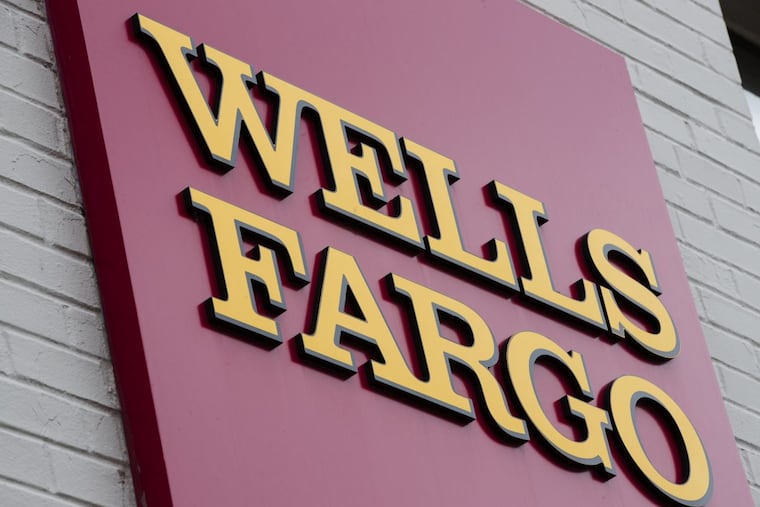Fed piles on Wells Fargo in latest chapter of banker self-destruction
Then-Fed Chief Yellin piled on, calling the bank's illegal conduct "pervasive and persistent."

Remember Robert Morris, the Founding Father? He saved George Washington's Army by making military supply profitable, started America's first central bank a few blocks from our newsroom, turned down Washington's offer to be Treasury Secretary (he let Alexander Hamilton do it), then went off to speculate in Poconos real estate.
And went so broke that he landed in jail.
That's why bankers have all those regulations: As bright as they are, when left alone they tend to wreck themselves, and take others with them.
Banks still find new ways to fail. Wells Fargo & Co., whose 6,000 branches form the largest bank network in the United States, has in recent years boasted of steady, magical growth, even when the rest of the industry was having a tough time getting customers to borrow, save, and invest.
It's five years now since reporters at the Los Angeles Times began exposing Wells Fargo's boasted growth as a product of perverse incentives and phony accounts. Fat legal settlements, mass firings, management resignations and force-outs, and public embarrassment in Congress culminated earlier this month with a regulatory slapping by departing Federal Reserve Chair Janet Yellin, her replacement, Jerome Powell, and their Fed colleagues, who voted to ban Wells Fargo from growing its way out of its troubles until it shows that it can follow the law.
What went wrong? Wells Fargo descends from the old Northwestern Bank of Minneapolis, a bank so good and careful that it stayed open through the Great Depression and kept smaller banks from failing. The old "Norwest" went nuts in the merger mania of the last 25 years, buying the remains of many other banks — including Wells Fargo, whose California name and headquarters it took over so it could escape those lousy Minneapolis winters, and First Union, which had ingested the biggest banks in Philadelphia.
It made sense to burn those billions buying 6,000 branches — if you didn't see the internet and smartphones coming. But with fewer walk-in customers, Wells Fargo had to find new ways to make money. Other banks closed branches. But former Wells Fargo CEO John Stumpf 's lieutenants came up with a scheme to pay branch workers to open more accounts, and pay bosses fat bonuses to make sure they did.
What happened next would have been obvious to anyone but an overpaid bank executive: Thousands of low-paid Wells Fargo employees illegally registered phony accounts for their unsuspecting neighbors, the kids on Junior's soccer team, and some woman who cashed her paychecks at the branch. Thousands were caught and fired, but Wells Fargo didn't change the system, so new workers kept doing the same thing.
In the uproar once all this deceit became public, Stumpf stepped down, the company was fined a few billion dollars, and a couple of bosses even had to give back part of their multimillion-dollar bonuses.
Finally, Yellen piled on, calling Wells Fargo's misconduct "pervasive and persistent." In its order Feb. 2, the Fed especially targeted — besides ex-CEO Stumpf — Stephen Sanger, retired boss at Cheerios-maker General Mills, who was made board chairman as a step toward damage control, even though Sanger had been one of the well-paid directors asleep at the switch for years: He was paid $486,000 in cash and stock for going to meetings in 2016 alone.
The pair were singled out because they "did not meet the Federal Reserve's expectations." Other prominent and well-connected Wells Fargo board members from the fraud years, including Elaine Chao and Federico Peña, who are the current and former U.S. Secretaries of Transportation, were not singled out like their leader Sanger in the Fed report. But make no mistake, if the Wells Fargo board failed Washington and America, it was an inside job.
On their sleepy watch, Wells Fargo "emphasized sales and growth without ensuring that senior management" knew the risks or obeyed the law, the Fed found. The regulators demanded the bank spend February and March coming up with a written plan to improve board oversight and governance, and to make sure the directors are people who have a clue what's going on in the branches, and will "hold senior management accountable."
We've heard this all before, the Fed noted. Since 2014, Wells Fargo bosses have been assuring the board that they "were addressing sales practice abuses." But the bosses didn't support that self-criticism with "concrete action plans."
So, this time the Fed applied what passes in Washington for a big stick: Wells Fargo is not allowed to add net loans or investments without the Fed's written permission. The company has to cooperate with any ongoing "investigations of whether separate enforcement actions should be taken" against Wells Fargo executives, board members, and employees. Wall Street didn't applaud; analysts like KBW's Brian Kleinhanzl predicted the bank would lose more money and market share. Wells Fargo shares plunged faster than other stocks in the recent market freeze.
The Fed slap ought to force Wells Fargo to set up a model board and excellent ethical practices, for awhile. Meanwhile, more of those 6,000 branches are being found unprofitable and shutting down (although Wells Fargo has raised pay for surviving branch staff).
Nobody is predicting that this is the end of banker self-destruction. Keep watching these guys.